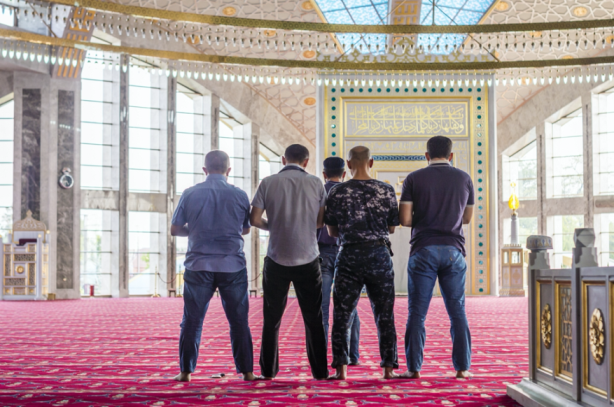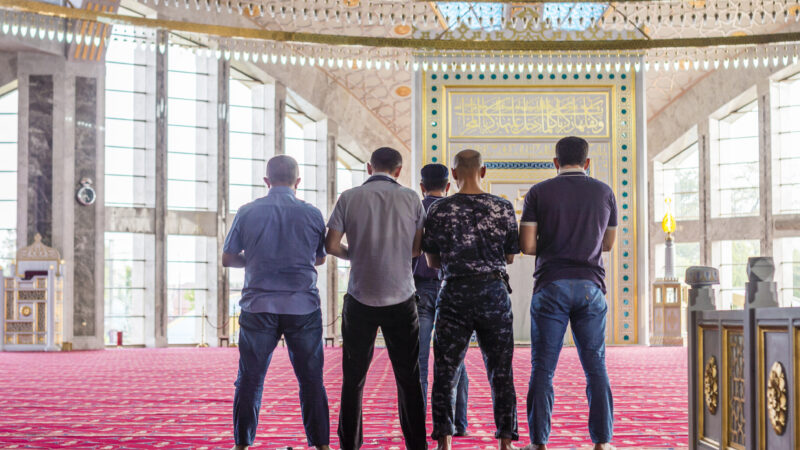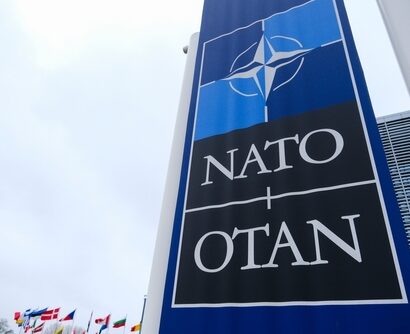Abstract: The article investigates the theoretical and historical foundations of the status of Islam and Muslim communities in Russia. By working within a postcolonial theoretical framework, it seeks to understand how the social constructs of us and others have been applied in order to legitimate security-oriented policies towards Muslims. An evolution of relationships between the Russian state and Islam are discussed in order to see how dichotomous division into traditional and non-traditional Islam influences the perception of the entire Muslim community.
Bottom-line-up-front: In Russia, the discourse about traditional Islam turns out to be completely dependent on the discourse about radical Islam: the former can be rather considered as a reaction to the threat of radical Islam and acts as a universal means of counteraction. Security measures, in turn, are based on the belief that the main trigger for extremist and terrorist activity are radical branches of religion.
Problem statement: How to understand the differences between Russian and European approaches towards securitization of Islam both in historical roots and contemporary outcomes?
So what?: By focusing on radicalization, it is often generalized and targeted not at a specific group of people, but to Muslims (those attributed to the radical groups) as a whole.

Source: shutterstock.com/Andrii Lutsyk
Framing the Challenge
Throughout history, European countries used an excuse of protection from the Islamic threat to proceed with further colonization and mastering other countries according to their own image and under their control. During the era of the Ottoman empire, European depicted western actions as a ‘civilizing mission’.[1] A process of othering was historically meant to assist western countries in legitimizing their right and power politically and ideologically to intervene and ‘educate’ nations on the other side of the hemisphere. This, in turn, fulfilled their (western) economic and geostrategic incentives. Edward Said’s most influential work Orientalism (1978) reveals how the social construction of the Orient has been embedded as the ultimate Other throughout history. A mainstream labelling and binary division of the world into the East (the Orient, Other) and the West (to greater extent Britain and France because of their colonial power) were solely constructed by European historians and politicians themselves aiming at the creation and maintenance of Western hegemony within world power relations.[2] Moreover, the process of othering was further enhanced by literature, art, movies and other communication channels.
In the 21st century, and especially after the 9/11 attack, new orientalism was operationalized to the extent that it allowed confronting Muslims and Islam on political and military grounds. One of the constitutive parts of the following western approach is condemning traditional Muslim culture, values and ideas for the sake of protection of western democratic regimes. Historically shaped and racially embedded in a process of a ‘civilizing mission’, one can now observe targeting of Muslims as terrorists, migrants, refugees or criminals to frame a picture of a marginalized group that poses a threat to society. In this context, it seems to be reasonable to operationalize Cesari’s definition of securitization that underlines an exceptional nature of the measures and procedures as well as their position within the national and international legal systems.[3] Security policies may, indeed, go beyond the rule of law using a condition of an emergency that threatens the survival of an apolitical community as a justification for these actions. In the face of this development, securitization of Islam, as one of the tools to contain and prevent certain existential threats is playing a considerable role in the toolkit of various western countries. After the 9/11 events in the USA and further terrorist attacks in Madrid, London and Glasgow, Britain has implemented a counter-terrorism strategy CONTEST that practically meant heavy-handed tactics aimed at Muslims (stops, searches and constant interventions into their activities)[4]. In the Netherlands, after the murder of the filmmaker Theo van Gogh in November 2004 the government adopted policies that expanded the powers of criminal investigation and substantively cut individual freedom in the field of immigration to the Netherlands.[5]
Historically shaped and racially embedded in a process of a ‘civilizing mission’, one can now observe targeting of Muslims as terrorists, migrants, refugees or criminals to frame a picture of a marginalized group that poses a threat to society.
As Amin-Khan argues that securitization is a historically specific process, in particular the US-influenced model of the security state that «gained popularity» within a post-cold war setting [1]. It was further fueled by the September 11 events. Furthermore, racialized discourses on the niqab, sports and terrorism suspicion may constitute and enhance the concept of securitization. These elements together with a militaristic ideology shape a so-called negative Muslim identity that enables further dehumanization of practices conducted towards Muslims and those ‘who look like Muslims’.
The Russian Case
Even though the historical context of Islamic presence in Russia differs from the developments that took place in western countries, security policies that have been initiated in the last 30 years embrace similar issues and follow the same route of searching for an enemy or a threat to the national state within the Muslim communities. Due to the 1994 Chechen War, policies regarding Muslims have alternated towards more security-oriented measures. Fueled by further terrorist attacks of extremist groups, a more Islamophobic approach took roots resulting in the closure of religious organizations, schools and marginalization of certain religious practices. In contrast to the official Islam ulama, the Wahhabi groups started to be considered responsible for the extremism and were associated with a threat not only to the religion of Islam but also to Russian statehood. A powerful state apparatus together with legal grounds that enabled to take control and monitor activities of religious organizations made it possible for the Russian government to securitize manifestations of Islam.
Due to the 1994 Chechen War, policies regarding Muslims have alternated towards more security-oriented measures.
Historical Background
Historically, Islam has had a serious impact on life, customs and traditions of the peoples of the Volga and the North Caucasus regions of Russia. Its history has indeed longer roots than Orthodoxy: Islam received official recognition in 922 in the aforementioned areas. Despite being one of the official religions during the period of the Russian Empire, Islam was prohibited (as any other religion) when the Soviets came to power. Kazan as previously established important center for Russian Muslims and Muslim modernists (jadids) was forced to abandon its religious traditions. Religious activities, including Islam, newly resurged after the collapse of the USSR. Institutional processes taking place in the early post-Soviet period may depict a strive for stabilization and harmonization of the relations between the state bodies and religious institutes as well as inter-confessional interactions. For instance, in 1992, the Muslim Religious Board (MRB) was set up followed by an election of the chairman of the Tatarstan Muslim Unifying Conference in 1998. If considering other parts of Russia, by the end of the 1990s, three leading Muslim spiritual centers have emerged – the Central Muslim Spiritual Directorate, the Supreme Coordination Center for Muslim Spiritual Directorates and the Council of Muftis of Russia.[6]
A distinctive feature of Muslims within a Russian context is their intra-contestation that can be understood from the ethnonational fragmentation and decentralization of the state in the 1990s that was further flourished due to ethnonational and regional as well as territorial divisions.[7] Because of the following events, the Muslim community did not shape into a single system capable of facing post-soviet realities: many organizational splits occurred, forming regional spiritual administrations, as it happened in North Caucasus at the beginning of the 1990s. However, the national legislation implemented in the upcoming years handed over a religious power to the regimes of Muslim republics that could exercise it through respective Spiritual Associations of Muslims by making the registration of the new mosques and religious organizations more complicated. This, in turn, resulted in the consolidation of power and unification of religious boards within the republics. The delegation of authority and power to the Muslim republics was based on the negative experience of policies in republics with Islam as a dominating religion (Kabardino-Balkaria, for example), when the central government unsuccessfully attempted to suppress Islamic groups resulting in rising oppositional religious identities and politicization of the religious issues.[8]
However, the national legislation implemented in the upcoming years handed over a religious power to the regimes of Muslim republics that could exercise it through respective Spiritual Associations of Muslims by making the registration of the new mosques and religious organizations more complicated.
As previously mentioned, the fundamental feature of Russian Islam is its inherent and significant role in indigenous Russian identity, in contrast to the European context, where it is perceived rather as externally brought religion. Russia historically included several large Muslim minorities – Tatars, Bashkirs, Chechens, Circassians and Azeris, together with some regions (Middle Volga and Northern Caucasus) where Muslims constituted the majority of the local population[6]. In other words, Islam has historically been seen one of the traditional religions in Russia. Yet, the relationship between the state and Islam religious bodies can rather be described as a complex triangle with the state on the top and two branches at the bottom – traditional (recognized and supported by the government) and non-traditional (non-formal organizations, whose positions do not coincide or contradict an official government’s policy and thus being either ignored or treated as a threat) Islam.
Nevertheless, a major turn on the perception of Muslims in Russia as well as governmental policies towards Muslims practices happened due to the previously mentioned 1994 Chechnyan War. Hence, an analysis of the securitization of Islam in Russia, especially in the 1990s and 2000s, should be conducted through lenses of the localized conflict that created a perception of the threat caused by radical or non-traditional Islam. The main concern was situated within a domain of Russian statehood and its exposure to an external threat that was being transformed into an external enemy by public and media’s discourse.
As a response to the concerns of extremism, Russian federal legislation shifted focus towards more control, monitoring and intervention into practices of religious groups and organizations in the 2000s. Due to the newly established legal grounds, federal and local authorities were enabled to exercise their power towards Muslims excessively. For example, the 2002 «Federal Law on Combating Extremist Activity» was used in order to prosecute people from minority Muslim communities (if their activity was considered to be a threat to the constitutional order), to ban specific religious texts and to repress political opposition.[8]
However, a negative attitude and practices towards Muslims may appear ‘acceptable’ only in case they are related to Islamic radicalism (in a form it is declared within a Western discourse). As a result, a binary division into «traditional» and «non-traditional» Islam has been artificially created, whereby the former is associated with loyalty to the Russian state and the latter – with extremist and terrorist incentives. Traditional Islam is expressed through the Muslim representatives whose activities are in line with the state policy and thus easily manageable, whereas non-traditional consists of those who do not include themselves in these hierarchically shaped relationships. In this case, groups that do not identify themselves as public policy adherents sooner or later may face their attribution to the radical and extremist groups. Bearing all the above-mentioned developments in mind, one can conclude that the position taken by the Russian government is a depiction of take-it-or-leave-it approach: either an organization, group or community complies with current state policies and gets support, or if not, get banned. Moreover, in case of unwillingness to accept the central authority, extremism can be used as a tool to intervene and take control over their activities.
As a result, a binary division into «traditional» and «non-traditional» Islam has been artificially created, whereby the former is associated with loyalty to the Russian state and the latter – with extremist and terrorist incentives.
Securitization in Practice
The policies aimed at counteracting radicalism may consist of two pillars – preventive and repressive. The former aims to restructure an existing system in a way that ensures the conditions for equal social participation, and the latter is directed at conducting person-specific interventions[5]. As for the strategies applied within the Russian context, despite being distinctive in certain areas, extremism and its counter-radicalization policies have links and similarities with those applied in other parts of the world. Policies that, at some point, may seem too extreme and authoritarian are used by politicians to boost their popularity and gain support from the population by appearing as ‘crisis solvers’. For instance, a manipulation that both politicians and journalists frequently used consisted of exaggerating the volumes of violence in the North Caucasus back in the 2000s, as well as linking it to Islamic insurgencies outside of Russia. In some cases, Muslims were wrongly portrayed as extremists and were associated with criminal groups. These groupings, however, did not connect their activity to religion as a motivating force but rather aimed to engage in power struggles and gain criminal profit.[9] This marginalization of Muslim groups refers to the processes of othering as well as construction of the national Us and those who fall outside this category. As one of the measures to manage and maintain allegiances of diverse Muslim groups, Crews (2014) sheds critical light on the Russian government’s attempts to co-opt Muslims for its political goals. Being to some extent repressive in its nature, the government looks over the interpretation of Islamic tradition by deciding on the compatibility of the religious authorities and practices with the state [9].
This marginalization of Muslim groups refers to the processes of othering as well as construction of the national Us and those who fall outside this category.
More recently, a new 2016 «Yarovaya law» has brought certain amendments to the previous laws on counter-terrorism actions. Whilst declaring a certain path towards a more peaceful society, this package of legislation substantively limits missionary activities and strives primarily to control Islam in Russia by bureaucratizing the procedure of obtaining the right to perform religious activities. Further criticism of the current securitization measures is attributed to the fact that the Russian state may use anti-extremism as an excuse for the power limitation of political opposition.[8]
Conclusion
Russia has experienced several changes regarding the power distribution within the political sphere in the last 30 years, which also affected Muslim republics and their inhabitants. Despite granting a certain level of autonomy to the leaders of these areas, Russian authorities seem to apply policies that will benefit those who fully support the central government’s political position. In contrast to European politics, there are no right-wing or any legal political party that is allowed to deploy anti-Islamic agenda in Russia. May it be connected to the constitutional order of the country, or to the historically shaped attitude to Islam as one of the traditional religions, one cannot overlook that the position of Muslim communities within power relations in Russia is much more solid than in Europe.
A close linkage between religion and politics creates a framework where the central authority seeks to obtain as many religious leaders on their side as possible. Yet, religious groups, communities or organizations that intentionally do not enter into a deal between the state and religious bodies may be subject to persecution or legal oppression. Consequently, a dichotomous perception of traditional (acceptable and loyal to the government) and non-traditional (radical, extremist, disloyal) has been widely spread and continuously nourished by the public and media’s discourses. Furthermore, in Russia, the discourse about traditional Islam turns out to be completely dependent on the discourse about radical Islam: the former can be rather considered as a reaction to the threat of radical Islam and acts as a universal means of counteraction.
Yet, religious groups, communities or organizations that intentionally do not enter into a deal between the state and religious bodies may be subject to persecution or legal oppression.
Security measures, in turn, are based on the belief that the main trigger for extremist and terrorist activity are radical branches of religion. The core problem here lies in misinterpretation of the threat as such: by focusing on the issue of radicalization, it is often generalized and targeted not at a specific group of people, but to Muslims (those who are attributed to the radical groups) as a whole.
Veronika Kulaga is a master student at the Department of International Development at the University of Vienna. She performed an internship at the Department for Political Affairs at the Embassy of Ukraine in Bern and currently doing an internship at the UNODC office in Vienna. The views contained in this article are the author’s alone and do not represent the views of any other side.
[1] Tariq Amin-Khan, New Orientalism, Securitisation and the Western Media’s Incendiary Racism, Third World Quarterly, 33(9), (2012), 1595-1610.
[2] Shehla Burney, CHAPTER ONE: Orientalism: The Making of the Other. Counterpoints,417, (2012), 23-39.
[3] Jocelyne Cesari, Securitization of Islam in Europe, Die Welt Des Islams, 52 (3/4), (2012), 430- 449.
[4] Stefano Bonino, Preventing Muslimness in Britain: The Normalisation of Exceptional Measures to Combat Terrorism, Journal of Muslim Minority Affairs, 33:3, (2013), 385-400.
[5] Frank J. Bujis, Muslims in the Netherlands: Social and Political Developments after 9/11, Journal of Ethnic and Migration Studies, 35(3), (2009), 421-438.
[6] Nadir Devlet, The Tension at Russia’s Center: Radical Islam in Tatarstan, German Marshall Fund of the United States, (2012), 1-3.
[7] Roland Dannreuther, Islamic Radicalization in Russia: An Assessment, International Affairs (Royal Institute of International Affairs 1944-), 86 (1), (2010), 109-126.
[8] Fradkin, R. (2020). The Co-optation of Islam in Russia. Current Trends of Islamist Ideology. In: Hudson Insitute Online. Retrieved July 15, 2021, from https://www.hudson.org/research/15699-the-co-optation-of-islam-in-russia
[9] Crews, R. (2014). Moscow and the Mosque: Co-opting Muslims in Putin’s Russia. In: Foreign Affairs, 93(2), 125-134.






